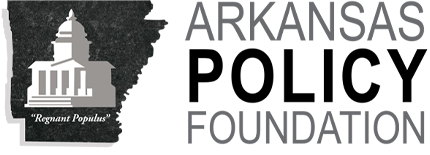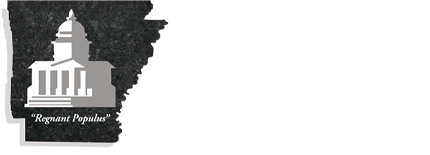Summary: The Arkansas Policy Foundation is celebrating its 20th anniversary. The Foundation focuses on fiscal and education policy. This memo explains the idea that tax rates influence economic decisions about jobs and paychecks, and discusses how several institutions successfully advanced fiscal reform in Washington, D.C., and Arkansas.
(September 2015) The top U.S. individual federal income tax rate has declined from 94% to 39.6% in the postwar era. Reduction of the top rate, including the cut from 70% to 28% that occurred in the 1980s was based on the idea tax rates influence economic decisions. Arkansas has also cut income tax rates since 2013, though the top rate remains at 7%.
Several institutions contributed to the advance of this idea. These include policymakers, economists, think tanks, and daily commercial newspapers.
A Brief History of 20th Century Income Tax Rates
The modern U.S. income tax was enacted in 1913, following ratification of the Sixteenth Amendment to the Constitution, according to the Internal Revenue Service.1 The top rate was 7.0% but rose to 77.0% during World War I. It was reduced four times during the 1920s under Treasury Secretary Andrew Mellon, dropping to 24.0% in 1929. The top rate was increased to 63% during the Great Depression, and again to 79% (1936) and in World War II, reaching 81% (1941), 88% (1942) and 94% (1944). The rate was 91% (1960) when John F. Kennedy was elected President.2
Kennedy, Reagan and Bush Tax Cuts. The top federal rate was cut to 77% (1964) and 70% (1965). It stayed there until 1981, except for three years during the Vietnam War. The top rate was cut to 69% (1981), 50% (1982), 38.5% (1987) and 28% (1988). It was raised to 39.6% (1993) before being reduced to 39.1% (2001), 38.6% (2002) and 35% (2003).3
Hutchinson Tax Cuts. Gov. Asa Hutchinson cut the top state rate from 7% to 6%, and the 6% rate to 5% for Arkansans earning less than $75,000.
Policymakers
The idea has advanced because of the leadership of key policymakers.
Kennedy, a Democrat, and Reagan, a Republican, linked their tax cuts to the idea that tax rates influence economic decisions about jobs and paychecks. Kennedy was elected in a recession that ended in February 1961.4 He stood on the slogan “getting America moving again” but the subsequent expansion was weak. Declaring the absence of recession is not tantamount to economic growth, Kennedy proposed cutting the top rates, arguing “a rising tide lifts all boats” and that strong economic growth would not occur without lower taxes.5 Reagan faced a similar dilemma: inflation and unemployment were both high, a phenomenon unexplained in conventional Keynesian models based on the Phillips Curve “trade-off” between the two. A brief recession ended in June 1980 shortly before Reagan was elected. But a second downturn began in July 1981, leading Reagan to declare, “This administration’s objective will be a healthy, vigorous, growing economy that provides equal opportunities for all Americans, with no barriers born of bigotry or discrimination. Putting America back to work means putting all Americans back to work. Ending inflation means freeing all Americans from the terror of runaway living costs. All must share in the productive work of this ‘new beginning,’ and all must share in the bounty of a revived economy.”6
The idea resulted in more jobs and paychecks. More than 13 million jobs were created between early 1964, when JFK’s tax policies were enacted; and December 1969.7 Reagan’s fiscal policies led to 20 million new jobs and much lower inflation: the CPI fell from 13.5% (1980) to 1.9% (1986).8
Gov. Hutchinson, in cutting Arkansas tax rates, cited a variation of the idea, i.e., the need to “make our tax code more competitive, starting with the middle class.” The latest state rate reduction took effect in mid-2015.
Economists
Economist Norman B. Ture,9 an adviser to Arkansas Congressman Wilbur D. Mills,10 a Democrat, explained the idea that rates influence economic behavior in the following passage:
“Supply side economics is merely the application of price theory–so-called “microeconomics”–in the analysis of problems concerning economic aggregates–so-called “macroeconomics.” Its conceptual antecedents are to be found in … the classical economists of the modern era from Adam Smith and J. B. Say through Milton Friedman and Gary Becker. As such, it presents no new body of theory; rather it entails addressing the neoclassical mode of analysis to public economic policies, whether these are focused on concerns of the economy as a whole or of particular groups therein.”11
Adam Smith wrote, “High taxes … frequently afford a smaller revenue to the government than what might be drawn from more moderate taxes.”12 J.B. Say was more explicit: “The encouragement of mere consumption is no benefit to commerce … It is the aim of good government to stimulate production, of bad government to encourage consumption.”13 Even J.M. Keynes acknowledged tax rates can influence economic decisions. “Nor should the argument seem strange that taxation may be so high as to defeat its object … For to take the opposite view today is to resemble a manufacturer who, running at a loss, decides to raise his price, and when his declining sales increase the loss, wrapping himself in the rectitude of plain arithmetic, decides that prudence requires him to raise the price still more-and who, when at last his account is balanced with nought on both sides, is still found righteously declaring that it would have been the act of a gambler to reduce price when you were already making a loss.”14 These and other economists acknowledge the idea in published works.
Think Tanks
Thinks tanks, as an institution, communicate the idea. They explain, in easy-to-understand terms that tax rates influence behavior. Their venues include reports and opinion pieces that reach policymakers and citizens.
The Washington-based Heritage Foundation is one example. The conservative think tank, in the 1980s, defined the Reagan tax cuts in terms of economic growth and incentives. Heritage collaborated with another group to produce a book Essays in Supply-Side Economics, which argued the case for the Reagan tax cuts. “We co-hosted a conference to introduce the publication and discuss the ideas that were put forth in the book,” Heritage President Edwin Feulner explained in a 1985 talk.15 “Through the book and the conference we provided evidence that reducing government barriers to productivity and growth and restoring incentives leads inevitably to a stronger, healthier economy.”
Heritage analysts advanced the idea in memos. “Proponents of the tax proposal,” a 1981 memo16 explained, “assert that a reduction of marginal tax rates would revitalize the economy by producing non-inflationary economic growth. Critics of the plan, on the other hand contend that such a policy would serve only to exacerbate inflationary pressures within the economy.” The primary objective was not “to stimulate aggregate demand,” a Keynesian goal, “but to increase” incentives. The economy entered recession months later, which led critics to demand the tax cuts be suspended. Many “seem to have forgotten,” another Heritage analyst wrote, “the fundamental reasons underlying the policy: that high marginal tax rates destroy the kind of productive activities most needed in an economic downturn. The most important barrier to economic recovery today is the heavy load of taxes helping to keep factories idle, investment opportunities unexploited and, ultimately, willing workers unemployed.”17 The economy started to expand again in November 1982, leading a third Heritage analyst to note “the decline in interest rates, and the dampening of inflation.”18 Both policy goals were achieved by the Reagan tax cuts.
These Heritage Foundation memos passed Feulner’s “briefcase test:”
“Any research should be as brief as possible. Arguments should be concise and clearly presented. Because of the vast number of issues addressed in Congress, there is a desperate need for concise studies which cut through the rhetoric and lay out the arguments to help members of Congress make informed choices on the issues before them. For this reason, we try to limit our Backgrounders to ten pages-a document which stands a much greater chance of being put into a briefcase and read before the debate than a book-which generally ends up on a bookshelf.”19
Daily Commercial Press
The final institution advancing the idea is the daily commercial press. The Wall Street Journal is noteworthy for publishing columns and editorials that explain tax rates influence economic decisions. Jude Wanninski, the Journal’s associate editor during the 1970s-1980s explained in his book:
“Vantage point is crucial … (it) had to be in the United States, the key currency country in the international monetary system .. (it) had to be in New York City, the financial center of a financial storm … The vantage point had to be at a newspaper, one without a political commitment to economic dogma, and the one with an international, not regional, bias. It could only be the Wall Street Journal and it could only be the editorial page …”20
Summary
The idea that tax rates influence economic decisions about jobs and paychecks has been advanced by institutions including policymakers, economists, think tanks, and daily commercial newspapers. Examples of the idea include the federal income tax cuts advanced by Presidents John F. Kennedy and Ronald Reagan. Both increased jobs and paychecks.
A similar policy is underway in Arkansas, where Gov. Asa Hutchinson has advanced a modest reduction in tax rates that should be expanded.
–Greg Kaza
1 “Personal Exemptions and Individual Income Tax Rates, 1913-2002,” IRS. http://www.irs.gov/pub/irs-soi/02inpetr.pdf
2 ibid, pp. 219-220
3 ibid., pg. 223. The highest rate included a “Vietnam War surcharge” from 1968 to 1970.
4 All dates in this memo are from the National Bureau of Economic Research, http://www.nber.org/cycles/cyclesmain.htm
5 “JFK on the Economy and Taxes,” John F. Kennedy Presidential Library and Museum,
http://www.jfklibrary.org/JFK/JFK-in-History/JFK-on-the-Economy-and-Taxes.aspx
6 “The Second American Revolution: Reaganomics,” The Ronald Reagan Presidential Library and Foundation, http://www.reaganfoundation.org/ECONOMIC-POLICY.aspx
7 The economic expansion ended that month.
8 Federal Reserve Bank of Minneapolis, https://minneapolisfed.org/community/teaching-aids/cpi-calculator-information/consumer-price-index-and-inflation-rates-1913
9 Ture’s N.Y. Times obituary noted his work on both the JFK and Reagan tax cuts. http://www.nytimes.com/1997/08/13/us/norman-b-ture-architect-of-the-1981-tax-cut-dies-at-74.html
10 Mills (1909-1992), chairman of the House Ways and Means Committee, advanced the Kennedy tax cuts in Congress.
11 Ture, Norman B. (1982) “Supply Side Analysis and Public Policy,” in Essays in Supply Side Economics, edited by David G. Raboy. (Washington) The Institute for Research on the Economics of Taxation
12 Smith, Adam. 1937 (1776) An Inquiry into the Nature and Causes of the Wealth of Nations (New York) Modern Library. Cited by Bruce Bartlett in “Supply-Side Economics: “Voodoo Economics” or Lasting Contribution?” June 23, 2002.
13 Say, Jean-Baptiste. (1834) A Treatise on Political Economy. 6th America ed. C.R. Prinsep and Clement C. Biddle, trans. (Philadelphia) Grigg & Elliott
14 Keynes, John Maynard. 1972 (1933) “The Means to Prosperity,” in The Collected Writings of John Maynard Keynes (London) MacMillan, vol. 9, pp. 355-366
15 Feulner described think tanks’ role in facilitating “change” and “innovation” in an August 18, 1985 talk in Sydney, Australia.
16 “Tax Cuts: A Remedy for Inflation,” Heritage Foundation, May 19, 1981
17 “The Case for Tax Cuts Now,” Heritage Foundation, Jan. 14, 1982
18 “Reaganomics: Making Gains,” Heritage Foundation, January 17, 1983
19 ibid. Feulner added, “All in all, we emphasized not only the production of a scholarly work, but also the marketing of the finished product to our target audiences.”
20 Wanninski, Jude. 1978. The Way the World Works (New York) Basic Books









